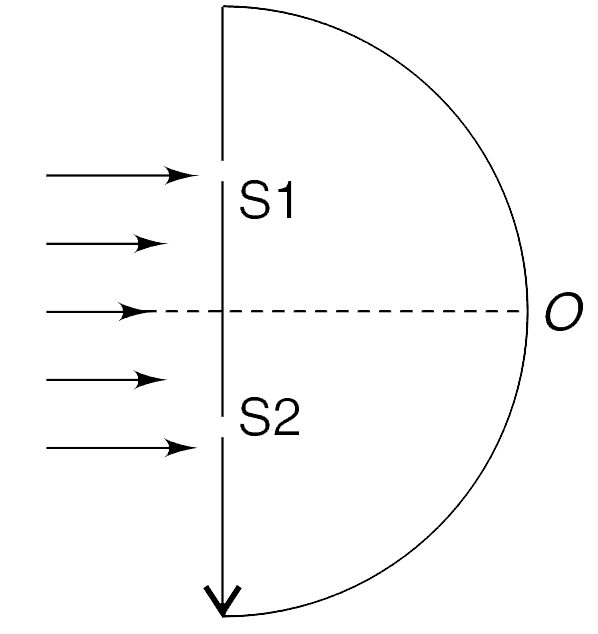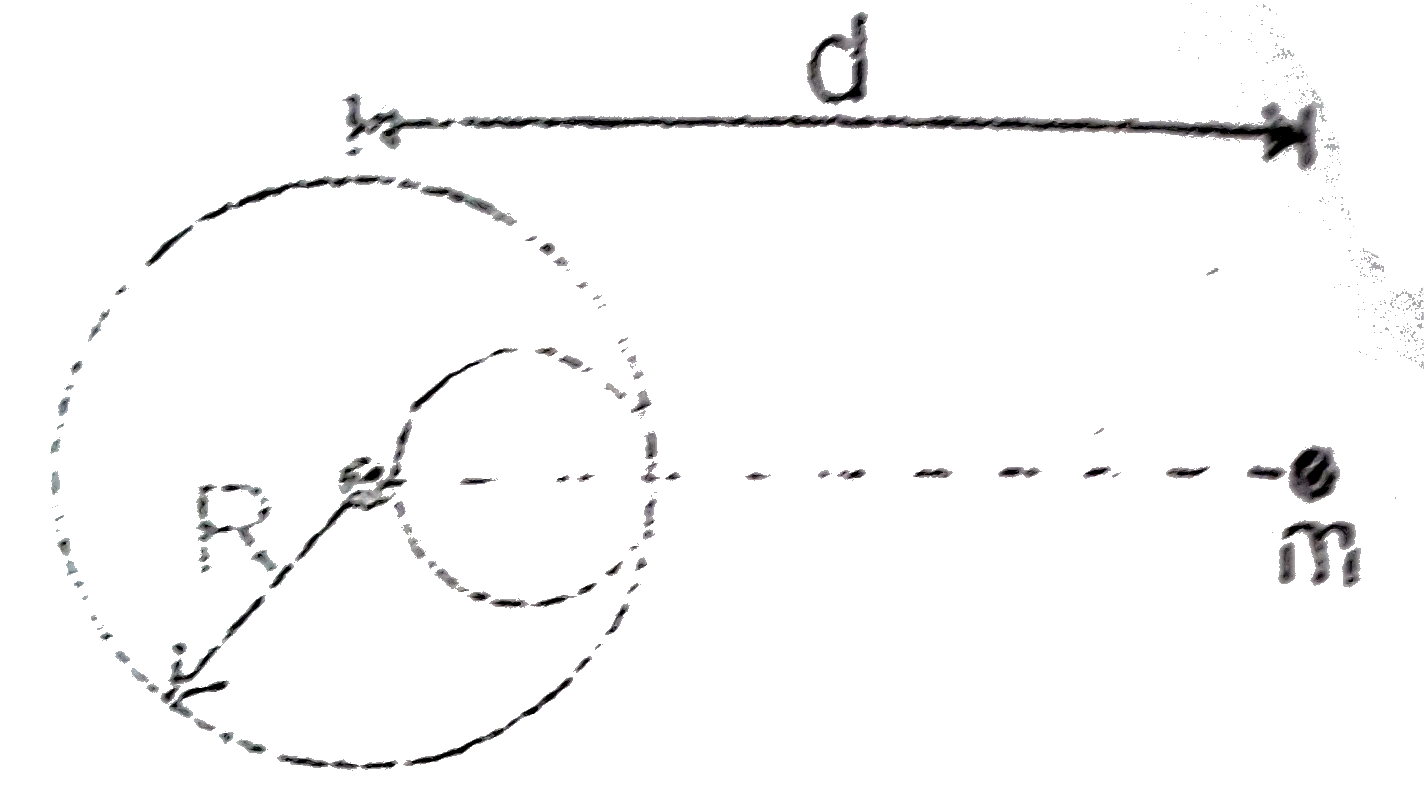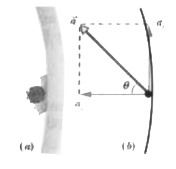A large temple has a depression in one wall. On the floor plan it appears as a indentation having spherical shape of radius 2.50m A worshiper stands on the center line of the depression, 2.00 m out from its deepest point,and whispers a prayers. Where is the sound concentrated after reflection from the back wall of the depression?
−103m
−107m
−310m
−710m
The correct Answer is:A
Step by step video & image solution for A large temple has a depression in one wall. On the floor plan it appears as a indentation having spherical shape of radius 2.50 m A worshiper stands on the center line of the depression, 2.00 m out from its deepest point,and whispers a prayers. Where is the sound concentrated after reflection from the back wall of the depression? by Physics experts to help you in doubts & scoring excellent marks in Class 12 exams.
Updated on:21/07/2023Topper's Solved these Questions
Similar Questions
A large temple has a depression in one wall.On ht floor plan is appers as a indentation having spherical shape of radius 2.50mA worshipper stands one the center line of the depression,2.00m out from its deepest point,and whispers a prayers.Where is the sound concentrated after reflection fromt he back wall of the depression?
View SolutionCoherent light of wavelengthλ = 500 nm is sent through two narrow parallel slits in a large vertical wall. The two slits are 5 μm apart. In front of the wall there is a semi cylindrical screen with its hori- zontal axis at the line running on the wall parallel to the slits and midway between them. Radius of the cylin- drical screen is R = 2.0 m. Find the vertical height of the second order interference maxima from the centre (O) of the screen.

View Solution
Knowledge Check
A spherical hollow cavity is made in a lead sphere of radius R such that is surface touches the outside surface of the lead sphere and passes through its centre. The mass of the sphere before hollowing was M with what gravitational force will the hollowed out lead sphere attract a small sphere of mass m which lies at a distacne d from the centre of the lead sphere on the straight line connecting the centeres of the spheres and that of the hollow if d=2R
 .A7GMm18R2B7GMm36R2C7GMm9R2D7GMm72R2
.A7GMm18R2B7GMm36R2C7GMm9R2D7GMm72R2A thin copper rod of uniform cross section A square metres and of length L metres has a spherical metal sphere of radius r metre at tis one end symmetrically attached to the copper rod. The thermal conductivity of copper is K and the emissivity of the spherical surface of the sphere is ε.The free end of the copper rod is maintained at the temperature T kelving by supplying thermal energy from a P watt source. Steady state conditions are allowed ot be established while the rod is properly insulated aginst heat loss from its lateral surface. Surroundings are at 0∘C Stefan's constant=σW/m2K4.
The net power that will be radiated out, PS from the sphere after steady state condition are reached isAPS=PBPS=PA4πr2CPS=0DPS=σεT4SA thin copper rod of uniform cross section A square metres and of length L metres has a spherical metal sphere of radius r metre at tis one end symmetrically attached to the copper rod. The thermal conductivity of copper is K and the emissivity of the spherical surface of the sphere is ε.The free end of the copper rod is maintained at the temperature T kelving by supplying thermal energy from a P watt source. Steady state conditions are allowed ot be established while the rod is properly insulated aginst heat loss from its lateral surface. Surroundings are at 0∘C Stefan's constant=σW/m2K4.
After the steady state conditions are reached,the temperature of the spherical end of the rod, TS isATS=T−PLKABTS=0∘CCTS=PLKADTS=T−P(L+r)KA
We are given the job of designing a large horizontal ring that will rotate around a vertical axis and that will have a radius of r = 33.1 m. Passengers will enter through a door in the outer wall of the ring and then stand next to that wall. We decide that for the time interval t = 0 to t = 2.30 s, the angular position θ(t) of a reference line on the ring will be given by
θ=ct3,

with c=6.39×10−2rad/s3. After t = 2.30 s, the angular speed will be held constant until the end of the ride. Once the ring begins to rotate, the floor of the ring will drop away from the riders but the riders will not fall - indeed, they feel as though they are pinned to the wall. For the time t = 2.20 s, let's determine a rider's angular speed ω, linear speed ν, angular acceleration α, tangential acceleration at, radial acceleration ar, and acceleration →a.
View SolutionA point object is kept at a distance of 2m from origin on x− axis. A quarter cylinder of radius R=30 cm and refractive index μ=1.5 having its axis ⊥r to plane of paper is placed between the object and the parabolic reflector at a distance of 130cm from origin as shown in figure. The position of the image after reflection from the parabolic reflector y2=2x is 25λcm. Find the value of λ?

View SolutionAn atom is assumed to tbe spherical in shape and thus, the size of atom is generally given in terms of radius of the sphere and is called atomic radius. It is usually defined as the distance between the centre of the nucleus and outermost shell where electron are present. The exact measure of atomic radius is not easy due to following reasons:
(i) The atom does not have well defined boundary. the probability of finding the electron is never zero even at large distance from the nucleus.
(ii) It is not possible to get an isolated atom. the electron density around an atom is affected by the presence of neighbouring atoms, i.e., the size of the atom changes in going from one set of environement to another.
(iii) the size of an atom is very small, of the order of about 1.2 Å,i.e., 1.2×10−10m.
An estimate of the size of the atom can, however, be made by knowing the distance betweent he atoms in the combined state. the distance between the atoms, i.e., bond length are generally measured by the application of techniques such as X-ray differaction, electron diffraction, infrared spectroscopy, nuclear magnetic resonance spectroscopy, etc. However, bond lengths change with different type of bonding. Three types of radius are commonly used, i.e.,
(a) Covalent radius (b) crystals radius (c) Vander waal's radius
Choose incorrect option regarding atomic radius
View SolutionAn atom is assumed to tbe spherical in shape and thus, the size of atom is generally given in terms of radius of the sphere and is called atomic radius. It is usually defined as the distance between the centre of the nucleus and outermost shell where electron are present. The exact measure of atomic radius is not easy due to following reasons:
(i) The atom does not have well defined boundary. the probability of finding the electron is never zero even at large distance from the nucleus.
(ii) It is not possible to get an isolated atom. the electron density around an atom is affected by the presence of neighbouring atoms, i.e., the size of the atom changes in going from one set of environement to another.
(iii) the size of an atom is very small, of the order of about 1.2 Å,i.e., 1.2×10−10m.
An estimate of the size of the atom can, however, be made by knowing the distance betweent he atoms in the combined state. the distance between the atoms, i.e., bond length are generally measured by the application of techniques such as X-ray differaction, electron diffraction, infrared spectroscopy, nuclear magnetic resonance spectroscopy, etc. However, bond lengths change with different type of bonding. Three types of radius are commonly used, i.e.,
(a) Covalent radius (b) crystals radius (c) Vander waal's radius
The correct order of effective nuclear charge Zeff is
View SolutionAn atom is assumed to tbe spherical in shape and thus, the size of atom is generally given in terms of radius of the sphere and is called atomic radius. It is usually defined as the distance between the centre of the nucleus and outermost shell where electron are present. The exact measure of atomic radius is not easy due to following reasons:
(i) The atom does not have well defined boundary. the probability of finding the electron is never zero even at large distance from the nucleus.
(ii) It is not possible to get an isolated atom. the electron density around an atom is affected by the presence of neighbouring atoms, i.e., the size of the atom changes in going from one set of environement to another.
(iii) the size of an atom is very small, of the order of about 1.2 Å,i.e., 1.2×10−10m.
An estimate of the size of the atom can, however, be made by knowing the distance betweent he atoms in the combined state. the distance between the atoms, i.e., bond length are generally measured by the application of techniques such as X-ray differaction, electron diffraction, infrared spectroscopy, nuclear magnetic resonance spectroscopy, etc. However, bond lengths change with different type of bonding. Three types of radius are commonly used, i.e.,
(a) Covalent radius (b) crystals radius (c) Vander waal's radius
Choose incorrect option regarding atomic size
View Solution
